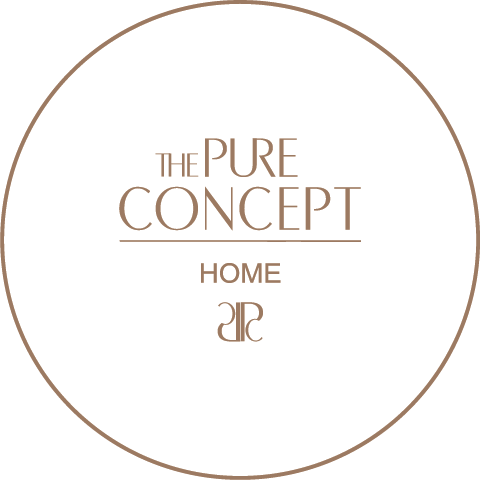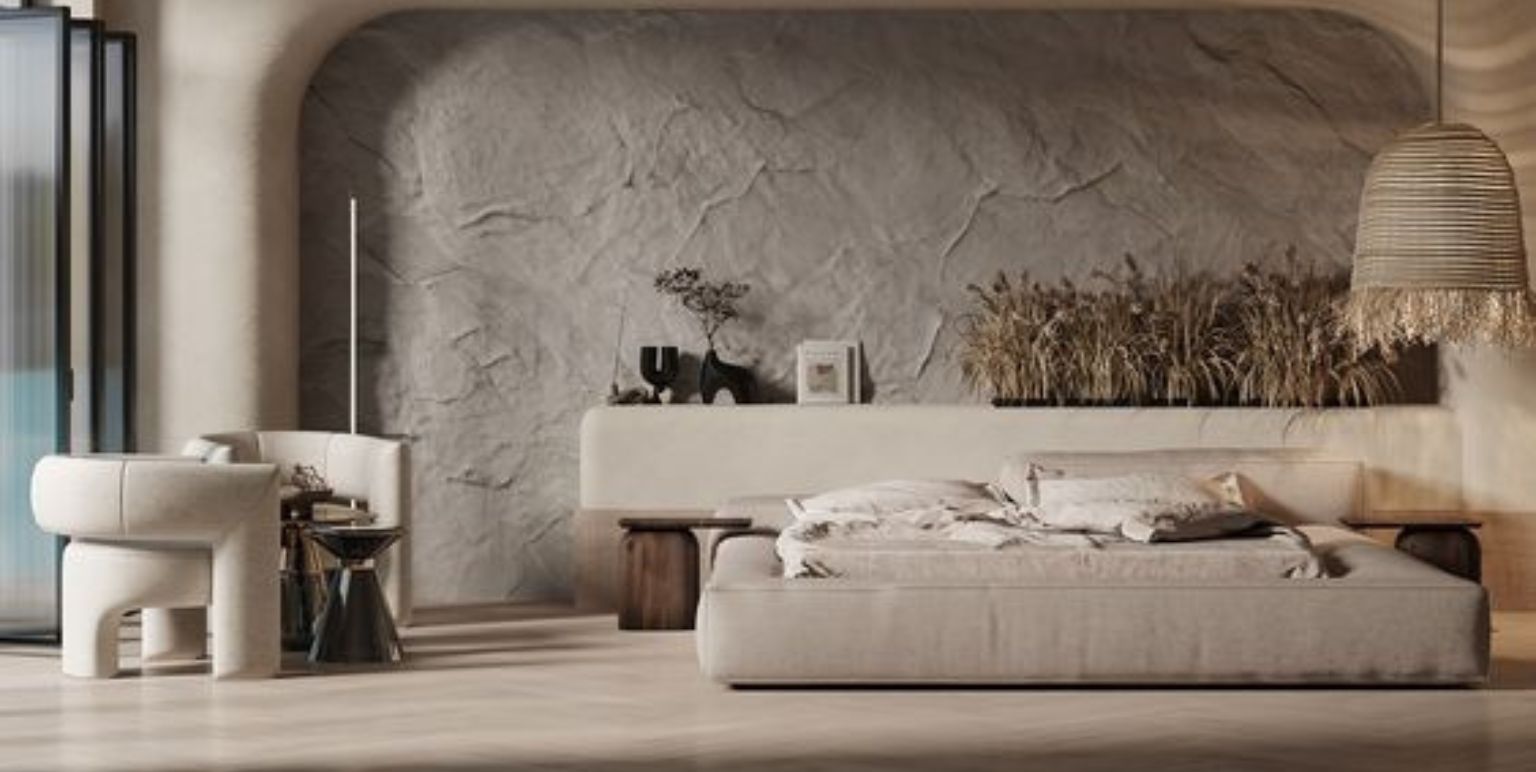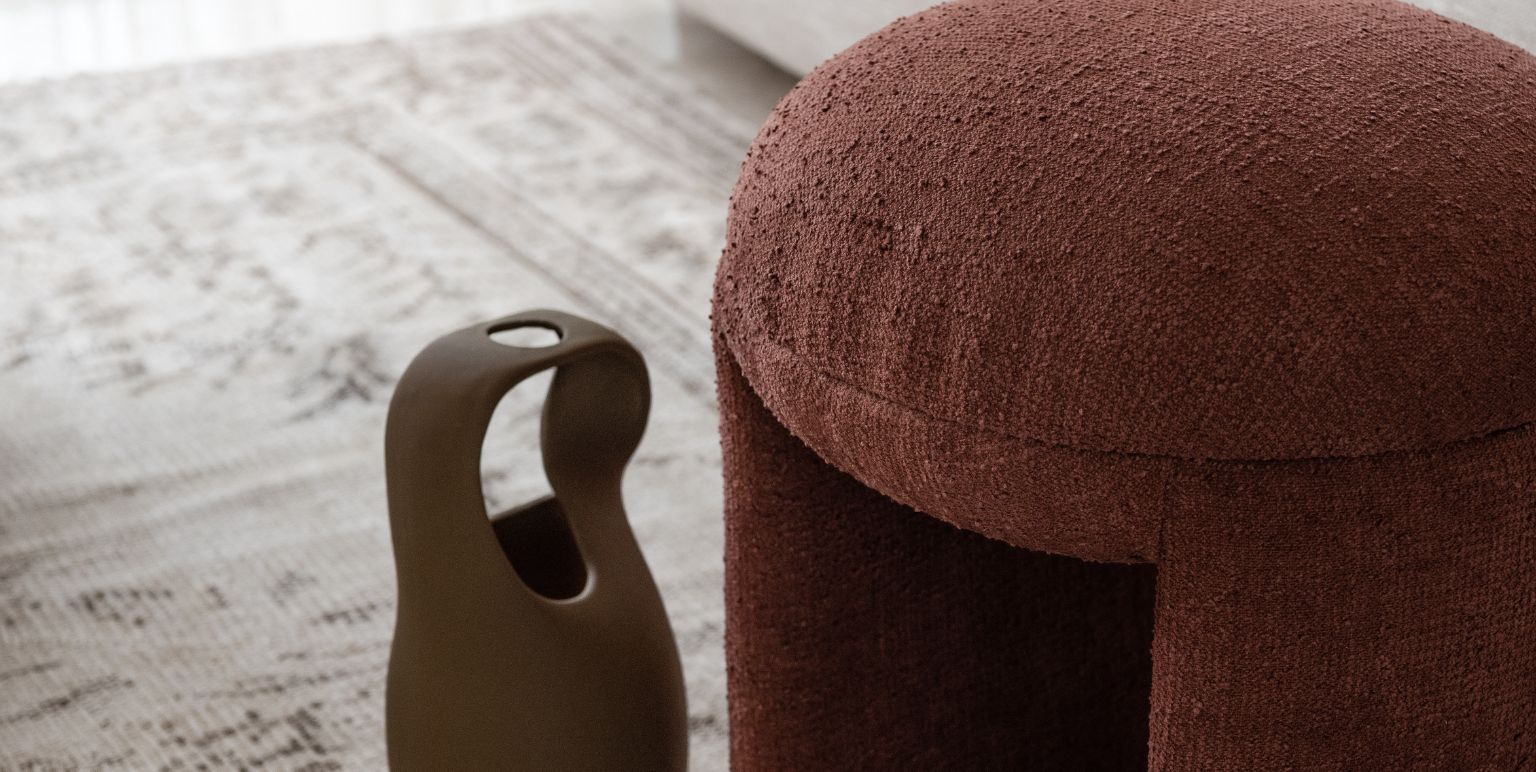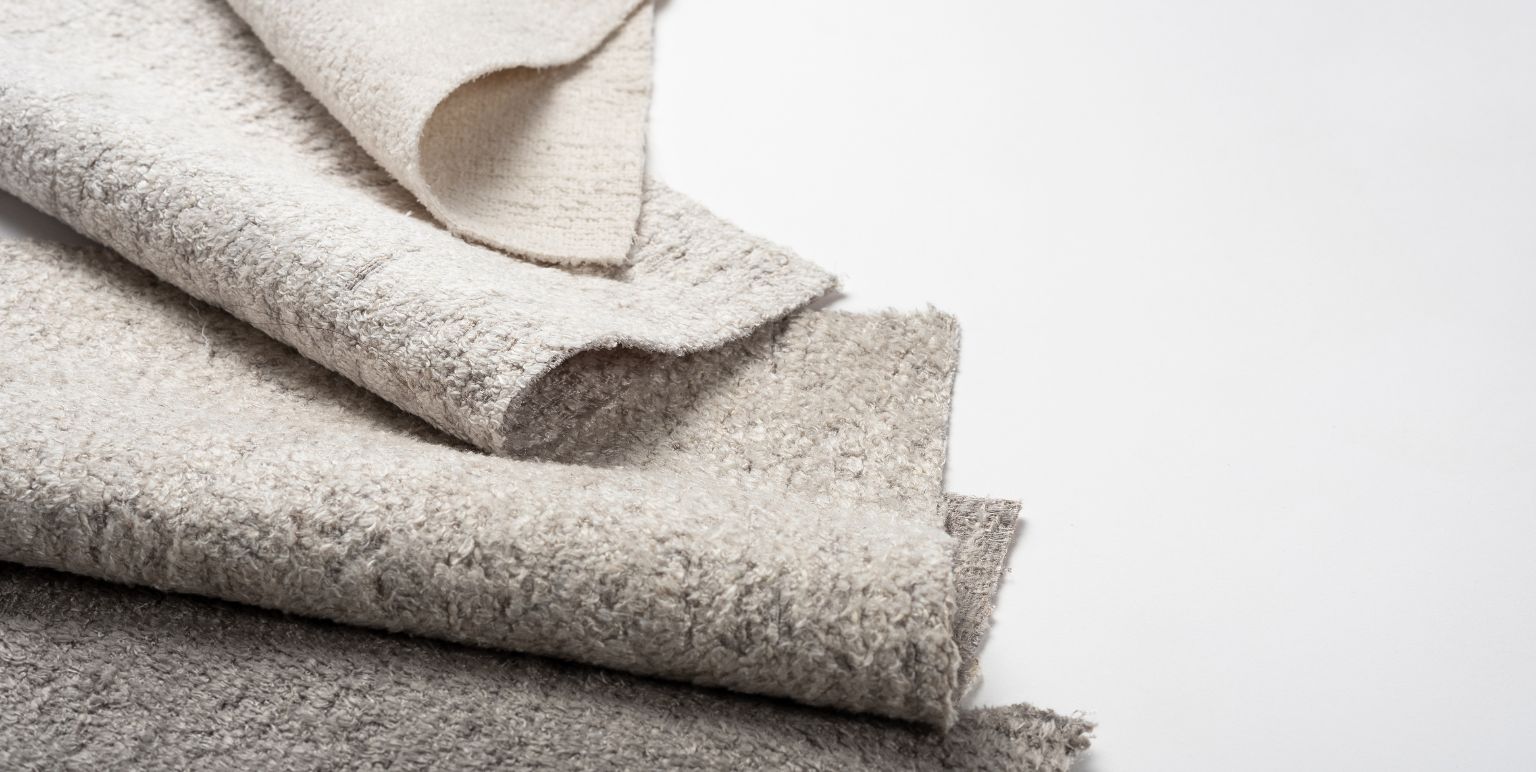
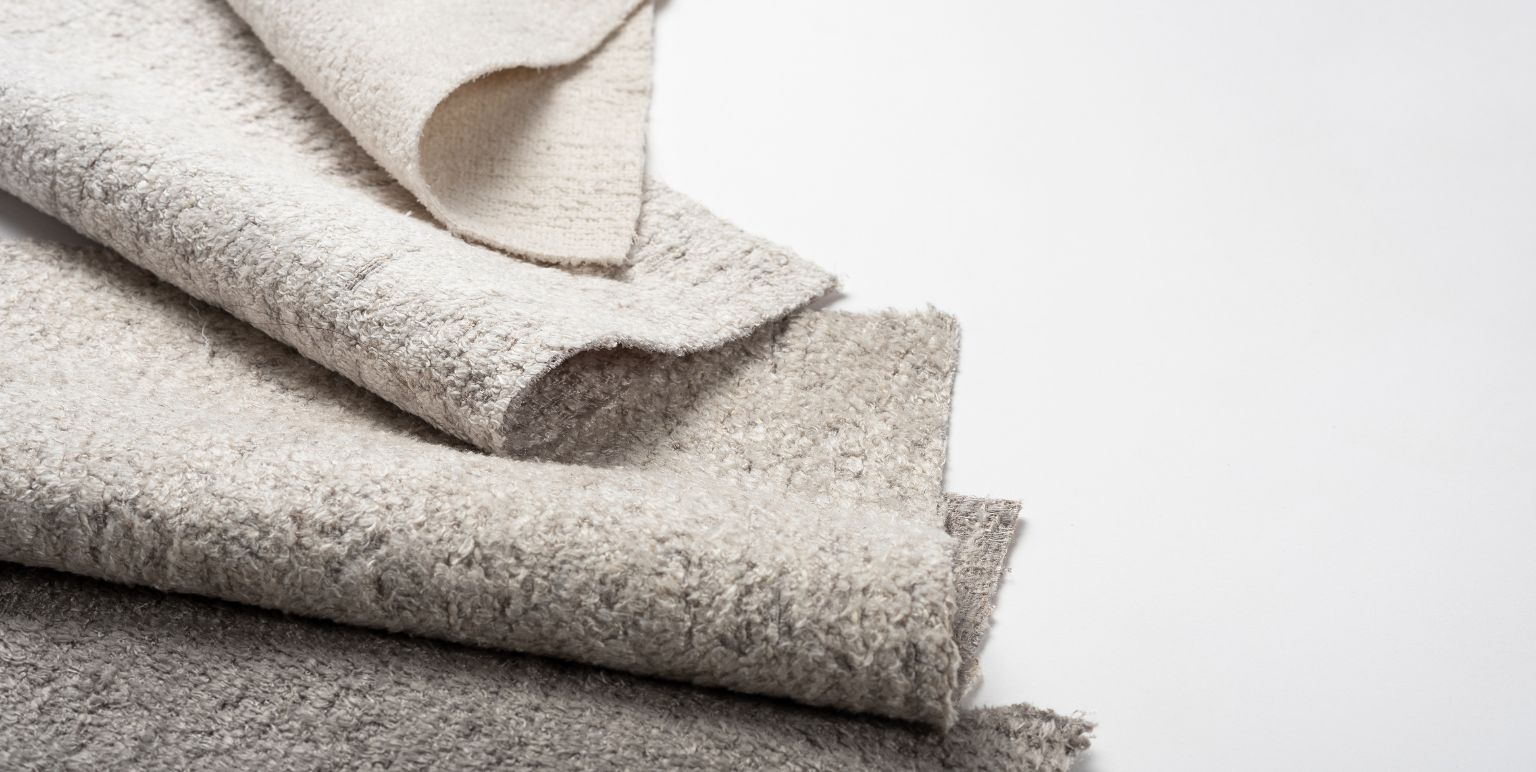
VIB: Very Interesting Boucle
Once the fabric that many of us loved to hate, bouclé is creating a change of heart – and a change in interior styling approaches – practically everywhere!
WAS IT A PERSON??
Not bouclé, not quite, but also, yes. A creative designer was certainly responsible for changing chair design and styling with it. Though bouclé is immediately thought of as ‘that 70s fabric,’ it was born in the late 1940s. This happened when Finnish industrial designer Eero Saarinen was requested by his friend, American architect-interior designer Florence Knoll to – paraphrased from Knoll – design a chair that felt like a lot of pillows, one she could really curl up in.
The result was the now world famous Womb™ Chair by Saarinen. It was named to symbolise a sensorial experience that mimicked the womb – safe, comforting, all-encompassing.
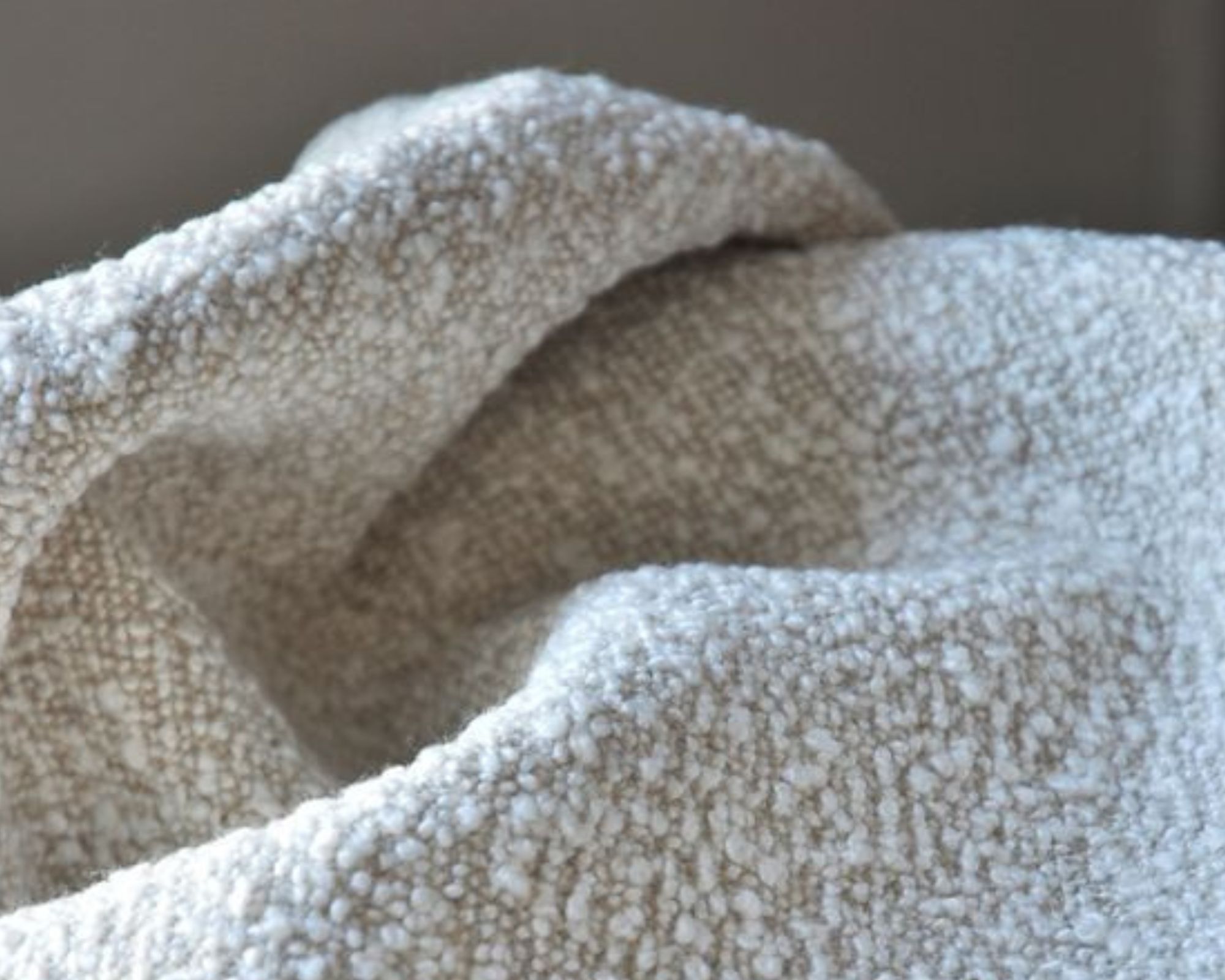
Many who have traced the roots of bouclé’s origins have often wondered if Knoll expected Saarinen to take her description of ‘curl up in’ literally.
Even if the brief didn’t specify, this turned out to be the happiest of coincidences. Knoll’s Classic Bouclé featured looped yarns that created a curly, nubby surface topography and texture.
The yarn, and the fabric, both are named after this cute, charismatic, curly detail – borrowing from the French word ‘boucler’ meaning ‘curled’ or ‘ringed’.
BUT SURELY IT’S NOT THE SAME AS THAT JACKET
The Chanel Bouclé Jacket? The Jackie Kennedy one? Great design is often identified by its scope for versatility, cutting across industry borders. Following Saarinen’s bouclé for upholstery, the trend of bouclé for fashion was most prominent in Chanel’s creative reimagination – it represented an elevation of her work with inexpensive, practical, but very tasteful tweed.
SO…. BOUCLÉ IS MADE OF?
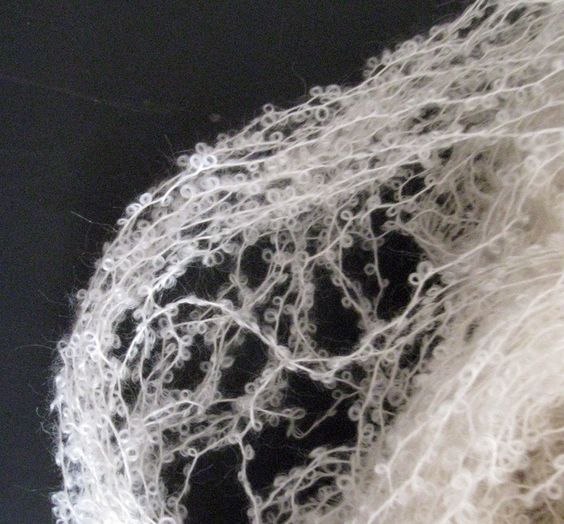
Most typically, wool, and even mohair, which is how it gets that fleecy texture. However, cotton-linen bouclé options are widely available, even silk, to enhance a desired soft, luxuriant tactile finish. These may be blended with other fibres like polyester, or rayon for the flexibility, or stain resistance, and even lightness that comes naturally to these fibres.
GETTING THAT LOOPY DESIGN RIGHT
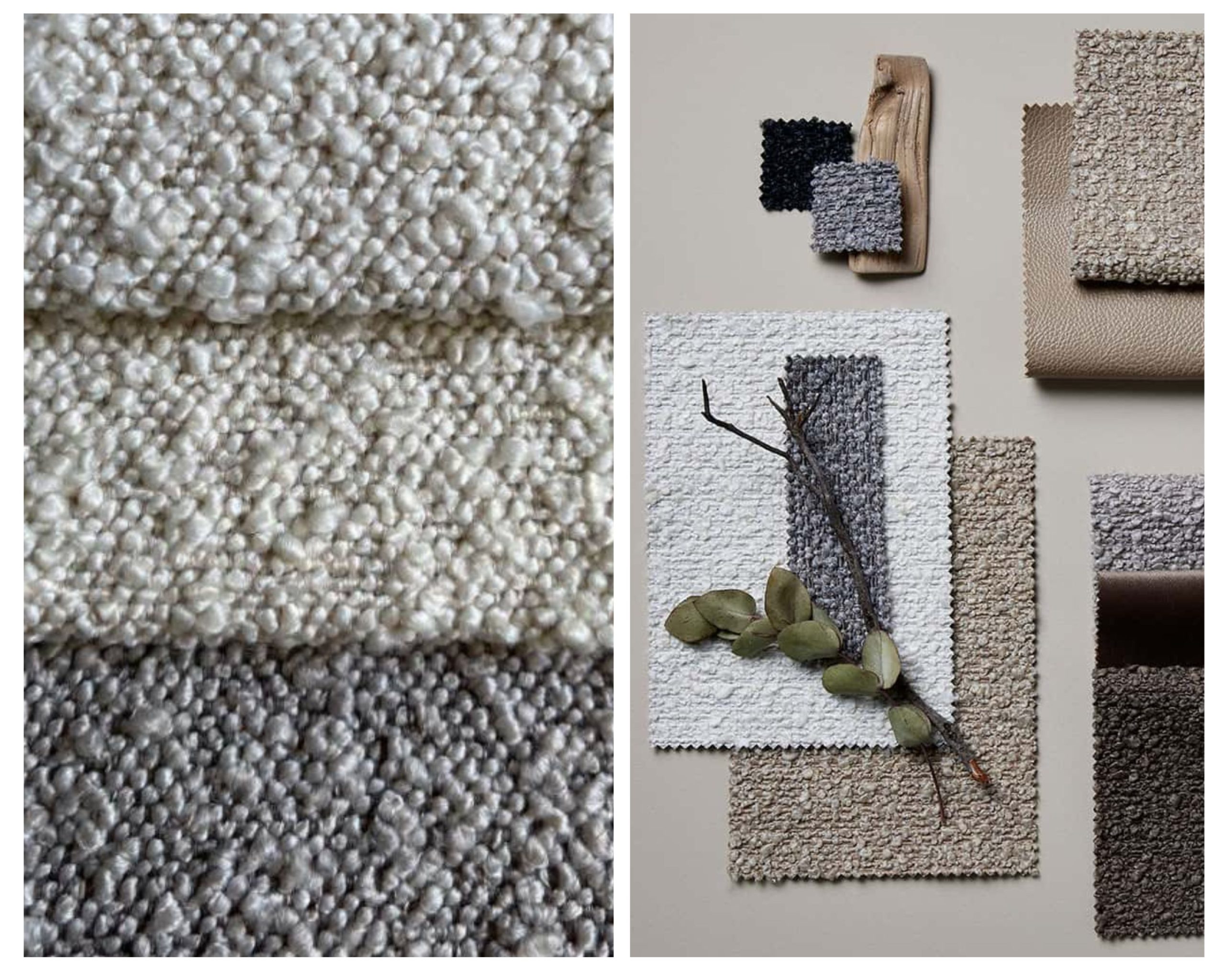
Bouclé is familiar as a mid-to-heavyweight fabric, especially for upholstery. But it’s also quite supple, in terms of natural elasticity. Woven or knitted from bouclé yarns, bouclé isn’t just defined by the existence of loops, but also by the fact that these loops may be having an individual, or hybrid look and character.
They can be large, loose circles, or they can be tightly wound, which makes them look more curly. In the final fabric, there may be a mix of loose and tight loops.
Further, the chosen fibres may be in different colours – not just for variety and freshness, but to create visually appealing depth and dimension, through tone-texture interplays. Needless to say, all of the above would need an incredible degree of skill and experience.
A couple of fibre strands – if not more – have to be worked in a way that one is woven loosely, while tension is applied to the other. Yes, you guessed it, the loopy look is made by the strands that are kept loose. The taut ones, naturally, then, become the anchor.
Incredible, isn’t it – that there should be such detail-oriented, painstaking work behind a fabric that has often, very sadly, been written off; because it looks like it’s trying too hard with its overly curly, ‘decorated’ look.
CARING FOR BOUCLÉ
Those loops look very easy-going and casual, but it does hurt to see them loose their quirky brilliance. It’s one of those scenarios in which you don’t know how badly it hurts, until the loops actually get ruined.
If the fibres are wool and mohair, it’s probably safer to get that bouclé dry cleaned.
Blended-fibre bouclé featuring cotton, linen, or polyester may be given a balanced-intensity machine wash. We say balanced-intensity because the wash may be dependent on the fact that it’s just for general maintenance.
Where there are stains, it’s best to understand the nature of the stain itself, before choosing at-home fix-its over professional stain removal.
We reckon surface-level stains that aren’t water or oil-based can be lightly brushed, or picked off with a blunt instrument that won’t disturb the loops.
Oil and water-based stains are best addressed as immediately as possible, with gentle, pH-neutral cleaners, and brushes that have soft, if not natural fibres.
Having said all this, we do recommend researching a professional ‘bouclé spa’ service, if you’re not sure about what you can do at home.
With most things – especially things like unique fabrics – when something feels off, it probably is!
IS IT TOO LOOPY TO GO ALL-OUT WITH THOSE LOOPS?
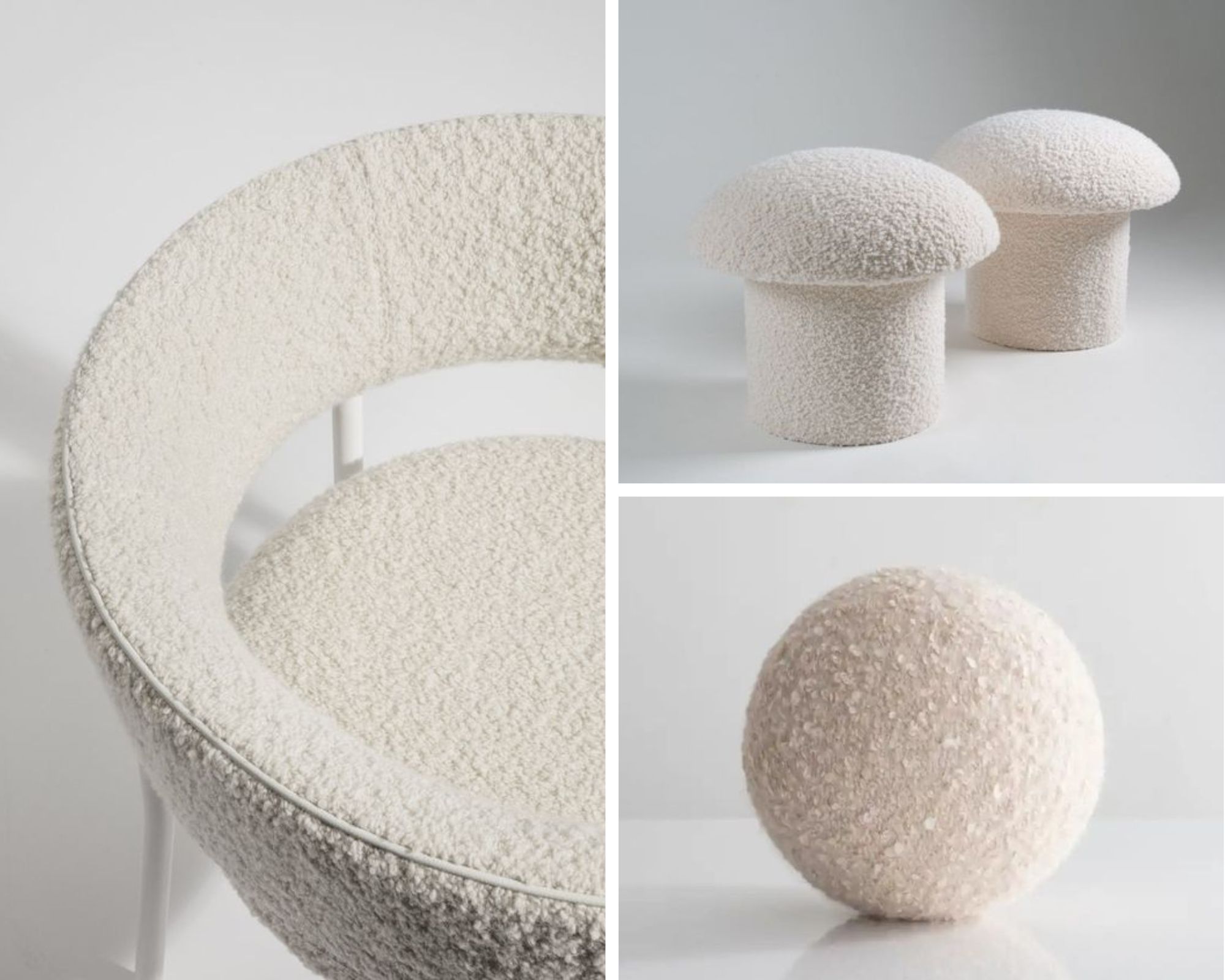
Going all bouclé everything isn’t the bit to worry about. Think about the scale and perspective of application, against other textural elements in the space. That’s after assessing how different scales play off against each other in that space to begin with.
Bouclé is great for layering, so let your creative juices flow over tone on tone versus complementary tone interplays. It really stands out as an accent detail as well, for instance, on just the seat, or the arm of your favourite chair.
Since cosy season has kicked off, how about a bouclé cluster – say, a three and a half seater and some loungers all upholstered in a neutral tone bouclé of choice – with a dark finish teak wood table in the centre..
